Site blog

With exponential growth in the unmanned aircraft systems industry, this program is a great way for students to get a jump start!
June 22-26, 2020
K-State Polytechnic has created an interactive, exciting and flexible UAS experience for teens ages 14 to 17. The primary goal of this virtual academy is to provide students the ability to explore UAS, build foundational skills, receive mentorship and if interested, transition to the campus’s degree program and a future career.
The academy’s curriculum is derived from leading industry experts, fostering the mastery of drone fundamentals and providing a springboard to the next step. The course is a well-balanced mix of online learning and flight training that can be done anywhere you choose.
An academy instruction kit will be sent to students before the program begins that includes essentials like a log book and K-State landing pad. Students who successfully complete the program will receive a special achievement package by mail.
Borrow it, buy it, own it: Students in this course will use their own drone if equipped with a camera; but don’t worry, we can help with recommendations for a type that can withstand beginner training and be fun for time to come. Our recommended UAS for this program runs between $150-$200.
Academy overview:
- Explore UAS flight fundamentals and maneuvers for multirotor aircraft
- Log three hours of flight time in an official logbook
- Learn about safety and flight planning
- Hear stories about careers from drone experts
- Discover your photography and video skills
UAS Virtual Academy
June 22-26
Cost is $49 + the purchase of a UAS (if not accessible to the student)
Register by June 15 at noon
Questions? Contact profed@k-state.edu
Recommended UAS information:
- Recommended UAS is DJI Tello Quadcopter with Fly More kit
- Smartphone is required to operate Tello
- Tello app must be downloaded
- Controller purchase is also recommended (retails for around $50)
If a student already owns one of the below UAS, it may be utilized for a similar experience. Please note, all course instruction and examples will be done using the Tello.
- DJI Mavic Mini
- DJI Mavic Air, Mavic Air 2
- DJI Spark
- DJI Mavic Pro
- DJI Mavic Pro 2
- DJI Mavic 2 Zoom
- DJI Phantom 2, 3, 4
- DJI Inspire 1, 2
- Parrot Bebop, Bebop 2
- Parrot Anafi
If a student has access to another small UAS not mentioned above, it must have the following capabilities to be utilized in this course:
- Onboard camera capable of remote image capture
- Onboard camera captures 5MP or greater images and 720p or greater video
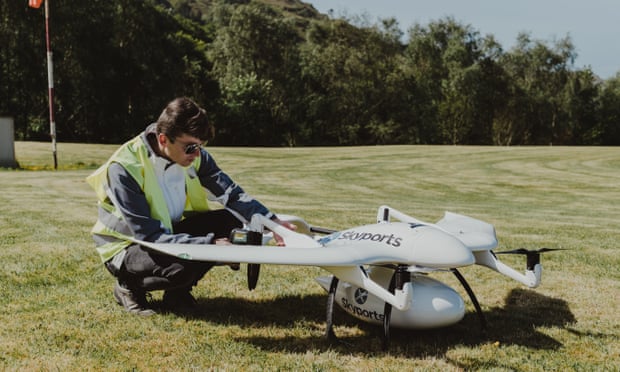
A Skyports worker with a delivery drone on the Isle of Mull. The aircraft can provide NHS workers with PPE and other supplies. Photograph: Skyports
Isle of Mull among areas trialling use of unmanned aircrafts to distribute supplies
Ten weeks on from the peak of the coronavirus pandemic there are still acute shortages of personal protective equipment (PPE) and Covid-19 testing kits across the UK, particularly in rural and isolated locations.
On the Isle of Mull in the Inner Hebrides, however, the vital supplies arrive up to four times a day. They are flown in from the mainland by drone in a trial that could lead to the NHS regularly using drones to fly equipment and medical samples to many of Scotland’s roughly 90 inhabited islands.
The unmanned aircraft industry hopes that showing the public drones can help in the fight against Covid-19, perhaps even save lives by speeding up test time turnarounds, could pave the way for wider adoption of drone technology.
US investment bank Goldman Sachs believe drones could spawn a $100bn (£80bn) market if governments around the world allowed them to be used for everything from policing and border patrol to surveying vital infrastructuresuch as bridges, or even replacing moped riders to deliver pizzas and fried chicken direct to your door.
It’s not just the 2,800 people on Mull who are receiving PPE by drone in the pandemic. Another trial is carrying PPE from Lee-on-the-Solent to the Isle of Wight. Both trials required approval by the Civil Aviation Authority (CAA) as rules ban drone flights beyond the line of sight of the remote pilot.
Drones are also being used to send coronavirus tests back and forth to up to 2,500 hospitals and rural health outposts in Rwanda and Ghana. This week the first US medical drone flight despatched a consignment of PPE to frontline workers in North Carolina.
Stephen Whiston, head of strategic planning for the Argyll and Bute health and social care partnership said drones could transform the speed with which doctors diagnose and treat patients across the authority’s rural community which is spread across 2,500 sq miles of western Scotland. This includes Mull and several other islands.
Whiston said: “Laboratory pick ups from GP surgeries up here can be very inefficient, with delays ranging from a couple of hours to two days if ferries are missed. When you’re talking about serious and developing conditions those sort of delays are very serious.”
The 16km (10 mile) flight from Lorn and Islands district general hospital in Oban, on the mainland, to Mull and Iona community hospital in Craignure, on the north-west of the island, takes about 15 minutes compared with between 90 minutes to six hours by road and ferry.
Whiston said the two-week drone delivery trial, which is being run in partnership with drone operator Skyports and defence and technology company Thales, was planned before coronavirus struck but has been accelerated by the pandemic.
A second test this winter is crucial because “the Scottish weather can be very challenging”, says Whitson. If it’s successful he thinks drones could be deployed across NHS Scotland. “We would look to link up more of our islands,” he said. “And we have been sharing what we’re doing here with colleagues across Scotland, and there is significant interest about using it in the Western Isles, Clyde and the Grampians.”
Raymond Li, head of air strategy and marketing for Thales, which is providing technology and flight planning , said the pandemic had proved very timely for the drone industry as regulators acted to speed up the approval process to start trial flights.
“This will also allow us to show the public the societal benefits of drones,” he said.
“People will have seen the headlines about the drone at Gatwick [in 2018, when hundreds of flights were cancelled when a rogue drone flew over the runway] and been worried about drones. Covid-19 may well change how people see their usefulness. They will see that drones can help save lives, and people will see the benefits to themselves and their families.”
In the current trial, using a German-made Wingcopter drone, a trained operator must pilot the drone and actively direct it via a live video feed. But future costs could be greatly reduced by allowing drones to fly missions autonomously. Li said: “Just imagine a fleet of thousands of drones doing everything from search and rescue, and border patrol to delivering food. There could even be air taxis [in which people are transported in drones without pilots].”
Holly Jamieson, head of future cities at Nesta Challenges, a charity supporting innovation, said the real-world use of drones would help prompt a public conversation on the use of the technology and its implications on personal privacy.
“You have to remember that the coronavirus pandemic is a pretty exceptional event and the public are a lot more accepting about a lot of things we wouldn’t put up with in normal times. It could be the same with drones,” she said.
Research by Nesta suggests using drones to assist public services, including transporting NHS tests and samples and supporting the police and fire services, could save the public sector £1.1bn by 2035.
Jamieson said: “People are concerned about the impact on their privacy and the noise. Public engagement is absolutely key. We need to be asking who should be allowed to operate them, where should they be able to go, and for what purposes. That piece of airspace above our heads is infrastructure that needs to be shaped.”
- By Rupert Neate The Guardian
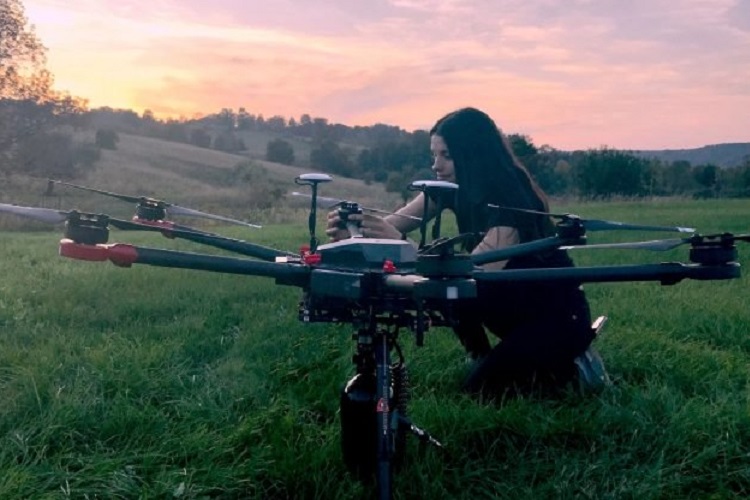
As the world continues to witness warming climate conditions, there has been a frightful uptick in massive wildfires from California to the Amazon rainforest and the Australian bush.
And as the world’s forests burn to the ground, this creates a dilemma not only for wildlife habitats but also for us humans – because trees help absorb and store carbon dioxide, they are one of our basic lines of defense against global warming.
However, a Canadian startup has set the lofty goal of using drones to plant a billion trees by 2028 – and in the process, the company hopes to revolutionize the manner in which the process of reforestation is tackled.
Flash Forest plans to deploy its revolutionary new technology to identify the best planting sites on fire-scorched land just north of Toronto where it can begin firing specially designed seedpods into the ground. The pods consist of germinated seeds, fertilizer, and a proprietary blend of “secret” ingredients, according to Newsweek.
A spray drone would then cover the area with nutrients such as nitrogen, helping the seedlings to grow, before mapping drones are sent later to monitor progress.
The company hopes to plant at least 40,000 trees in the Toronto region this month alone. Later this year, Flash Forest will also plant up to 300,000 trees in Hawaii.
And while people are capable of planting around 1,500 seed pods by hands, per day – requiring a hectic pace, without a doubt – Flash Forest’s drone solutions are apparently capable of planting 10,000 to 20,000 at present, with the company hoping to eventually be able to plant 100,000 a day.
And not only is the process far less intensive in terms of manual labor required, but it’s also far cheaper at around 50 cents per seed pod – about 20 percent cheaper than traditional planting techniques.
According to a study published in the journal Science, planting about a billion trees across the globe could remove two-thirds of all carbon dioxide emissions worldwide—approximately 25 percent of the CO2 in the atmosphere—creating a vast natural means to trap and store the emissions in an affordable and politically non-controversial manner.
The company claims that its drones can sharply increase the speed and efficiency of planting trees. The company said:
“Flash Forest is a reforestation company that can plant at 10 times the normal rate and at 20 percent of the cost of traditional tree planting techniques.
“With drone engineering, we bring new levels of accuracy, precision and speed to the reforestation industry.”
The world faces a shrinking window of time in which to tackle the problem of heat-trapping emissions, with researchers warning that rampant and accelerating hot conditions across the world could exceed the worst-case scenarios previously forecast by climate experts – giving added impetus to mitigation efforts.
Flash Forest co-founder and chief strategy officer Angelique Ahlstrom said that’s where its drones can be a crucial part of such a strategy. She told Fast Company:
“There are a lot of different attempts to tackle reforestation. But despite all of them, they’re still failing, with a net loss of 7 billion trees every year.”
Ahlstrom notes that it’s not possible to combat deforestation by planting trees alone – however, Flash Forest’s state-of-the-art hardware using mapping drones and pneumatic-powered firing devices that shoot pods deep into the soil can be an asset in the cause.
Continuing, she said:
“It allows you to get into trickier areas that human planters can’t.”
Each planting will also consist of four species and eventually eight – covering an aspect of mass tree-planting that similar initiatives have overlooked in the past. Ahlstrom said:
“We very much prioritize biodiversity, so we try to plant species that are native to the land as opposed to monocultures.
“We work with local seed banks and also take into account that the different changes that climate change brings with temperature rise, anticipating what the climate will be like in five to eight years when these trees are much older and have grown to a more mature stage, and how that will affect them.”
According to their website, they’ve so far planted 469 White Spruce, 344 White Pine, around 327 Blue Spruce, 225 Red Maple, 790 White Birch, 621 Sugar Maple, 131 Douglas Fir, and 199 Balsam.
And with researchers claiming that the Earth has room for over 1 trillion additional trees that can be planted across the globe, Flash Forest could help change the way any worldwide planting initiative would take shape. For Ahlstrom, it’s pretty simple math. She said:
By Elias Marat | Creative Commons | TheMindUnleashed.com“I think that drones are absolutely necessary to hit the kind of targets that we’re saying are necessary to achieve some of our carbon sequestration goals as a global society (and) when you look at the potential for drones, we plant 10 times faster than humans.”

MQ-25 Stingray.
BOEING ART
The U.S. Navy is spending $13 billion buying 72 MQ-25 Stingray tanker drones for its 11 aircraft carriers. The idea is for the Boeing BA-made MQ-25s to refuel manned fighters, extending their range while also relieving the fighter squadrons of their own tanking duties.
But the MQ-25 always had potential to be more than just an aerial-refueler. With its stealthy airframe and high endurance, it could be a surveillance plane and even a light strike platform, too.At least one fleet community isn’t waiting for the Navy and Boeing to adapt the MQ-25 to other missions. The fleet’s airborne command-and-control weapons school at Naval Base Ventura County in Point Mugu, California, already thinks of the Stingray as more than a tanker.
Robbin Laird, a military analyst and writer, spoke to Cmdr. Christopher Hulitt, the head of the school, and summarized the conversation at Second Line of Defense.
Laird and Hulitt’s main point is that the Navy is acquiring new aircraft with highly-sophisticated communications systems and sensors. The F-35C stealth fighter. The E-2D early-warning plane. The MQ-4C high-altitude drone. And the MQ-25.
Where before, E-2s would fly over a maritime battle, detecting targets and relaying commands to fighters, now a new system is coming together. The F-35C, E-2D, MQ-4C and MQ-25 all possess the qualities of a sensor- and command-and-control platform. So instead of passing information just one way—from an E-2 to a fighter—in coming years info could begin moving in all directions.


U.S. NAVY PHOTO BY MASS COMMUNICATION SPECIALIST 3RD CLASS REBEKAH WATKINS
An F-35C in stealth mode might detect an enemy ship using its passive sensors and beam, via secure datalink, the target’s general location to the nearby MQ-25 that just refueled the F-35C. The MQ-25 could hand off the data to an E-2D. The E-2D crew could instruct the operators of an MQ-4C to steer their drone toward the enemy ship’s location.
Once the MQ-4C pinpoints the ship, the E-2D could then pass the targeting data back to the F-35C as well as to other allied vessels and planes, all of which could fire missiles. Imagine this whole process happening in minutes.
“It is about deploying an extended trusted sensor network, which can be tapped through various waveforms, and then being able to shape how the decision-making arc can best deliver the desired combat effect,” Laird wrote.
The Navy hopes to deploy the first MQ-25s as early as 2024.
David Axe Contributor
Aerospace & Defense

USS Portland (LPD-27) successfully disabled an unmanned aerial vehicle (UAV) with a Solid State Laser. US Navy Image
Amphibious ship USS Portland (LPD-27) shot down a drone with a laser weapon during a first-of-its-kind at-sea test of the Navy’s high-energy laser weapon system.
The Navy is currently developing and testing a portfolio of laser weapons, some of which are more powerful but only suited for ships with greater power-generation capabilities, like the San Antonio-class amphibious transport docks (LPD-17), while others are less powerful but could be fielded on a greater variety of ships, including the Arleigh Burke-class destroyer.
In this test, Portland fired its high-power laser weapon at an unmanned aerial vehicle while operating off Pearl Harbor, Hawaii, on May 16, U.S. Pacific Fleet announced in a news release today.
“By conducting advanced at sea tests against UAVs and small crafts, we will gain valuable information on the capabilities of the Solid State Laser Weapons System Demonstrator against potential threats,” Capt. Karrey Sanders, commanding officer of Portland, said in the news release.
“The Solid State Laser Weapons System Demonstrator is a unique capability the Portland gets to test and operate for the Navy, while paving the way for future weapons systems,” he added. “With this new advanced capability, we are redefining war at sea for the Navy.”
Portland, a San Antonio-class amphibious transport dock, was tapped in 2018 to be the first ship to test the Solid State Laser – Technology Maturation (SSL-TM) Laser Weapon System Demonstrator (LWSD) MK 2 MOD 0 at sea. This second iteration of SSL-TM, which is ultimately expected to become a 150-kilowatt laser weapon, draws from lessons learned from Office of Naval Research (ONR) demonstrations and testing that date back to 2011. The original 30-kilowatt Laser Weapon System (LaWS) was used by interim afloat forward staging base USS Ponce (AFSB(I)-15) in the U.S. 5th Fleet area of operations from 2014 to 2017 to gather data and lessons learned on how the system performed in an operational setting.
This follow-on SSL-TM has challenged scientists to made advances in areas like the beam director and spectral beam combining, which takes many lasers of different wave lengths and creates a more powerful beam by “ganging them up,” Frank Peterkin, the Navy’s senior technologist for directed energy, told USNI News last year.
The weapon had been undergoing testing at a Northrop Grumman facility in Redondo Beach, Calif., where engineers could test subsystems to reduce risk before sending the weapon system to conduct land-based testing and then the at-sea testing on Portland.
The Navy is also working on a less powerful laser weapon, the High Energy Laser and Integrated Optical-dazzler and Surveillance (HELIOS), which is planned to reach 60 kw and could be installed onto ships like today’s fielded destroyers that have less power margin to add in new systems. The Navy is also pursuing an Optical Dazzling Interdictor, Navy (ODIN) that would not be used to knock down incoming threats but would rather be a non-lethal option to warn away enemy craft approaching a U.S. warship.
In addition to Northrop Grumman’s work on the SSL-TM on board Portland, Lockheed Martin is also pursuing a 150kw laser weapon. The Navy announced earlier this year that it would put a laser weapon – an early version of this weapon system, still at a lower power level, USNI News understands – on USS Little Rock (LCS-9), a Littoral Combat Ship deploying to U.S. 4th Fleet later this year.
By: Megan Eckstein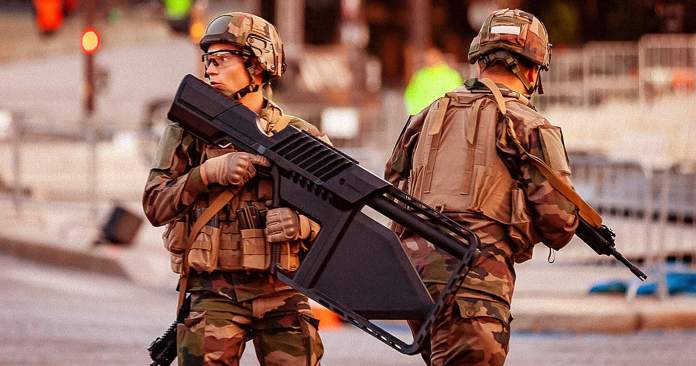
DroneShield Ltd (ASX:DRO or DRO.AU) (“DroneShield” or the “Company”) is pleased to advise that, following a competitive tender, its DroneGun TacticalTM product was selected as the preferred solution by the European Union police forces. The process was run by Belgium Police, with an EU-wide framework. Sales, training and local support will be managed by DroneShield’s Benelux region partner ForcePro BV.
Under the framework agreement, DroneGun TacticalTM is expected to be rolled out across a range of police units across European Union. While the agreement does not specify minimum purchase quantities, DroneShield expects this agreement to produce material periodic sales over an extended period of time, with orders commencing this quarter. Further, the Company expects this framework to be a platform for sales of its other products, such as RfPatrolTM and its vehicle and fixed site products, to EU police departments.
Oleg Vornik, DroneShield’s CEO, commented, “This is an exciting win in a number of ways. This is the first framework rollout of counterdrone equipment by any Government customer, anywhere in the world. In addition to the substantial nature of this contract, we expect for this to set a standard for DroneGun TacticalTM procurement by other Government customers in the EU and globally, helping fasttrack additional acquisitions. This selection by a highly demanding customer, following on the UK Government CPNI certification last year, reinforces the world leading position of our products in the industry. Importantly, this win of the competitive tender by DroneShield illustrates that security is at the forefront of governments globally as well as the fact that, after a brief interruption caused by the COVID crisis, global procurement processes have resumed.”
By PRESS

Leading automated industrial drones startup, Airobotics, receives the world’s first approval to fly over a major metropolis and flies above Singapore.
As part of Singapore’s response to protect the public’s health during the coronavirus crisis, The Home Team Science & Technology Agency (HTX) of Singapore, has partnered with Airobotics, through its local partner, SJ Defence, the defence arm of Surbana Jurong (SJ) Group.
HTX, a statutory board of the Ministry of Home Affairs in Singapore, is using Airobotics’ cutting edge drone technology to augment Singapore Police Force’s (SPF) efforts in policing during this period to fly above a major industrial estate area to track anomalies such as congregations of people during the Circuit Breaker Period in Singapore. The technology complements police operations by using real-time aerial data broadcasted by Airobotics’ automated drone technology to accelerate the feedback process and help the SPF make better informed decisions. To support the drone operations, SJ Defence provides logistics management, operations coordination and ground safety observers.
“We are proud to work with HTX to mitigate the spread of COVID-19,” said Ran Krauss, CEO and Co-Founder of Airobotics. “What started off as a vision has now become a reality. We are one step closer to making drones an everyday reality in cities.”
“HTX is currently trialing the system in real operations, collecting critical operating data, for evaluating the feasibility of using this advanced technology to perform remote viewing of wide and difficult-to-access areas, in a safer and more cost efficient way. The Airobotics system could provide the additional dimension of capability to augment our frontline,” said Cheng Wee Kiang, Director of Robotics, Automation and Unmanned Systems Centre of Expertise at HTX.
As a completely automatic unmanned aerial system, the first of its kind in the global market, Airobotics enables governments and industrial companies to leverage the power of drones without the need for a human operator. Airobotics’ platform provides professionals with the ability to run missions automatically, to monitor, inspect, survey, and secure urban areas, as well as large industrial facilities.
The Airobotics’ automatic platform is comprised of three parts: “Optimus”, a large, high capacity drone capable of flying 45-minute missions while carrying a one-kilogram mission specific payload; an “Airbase”, a completely automated base station from which the Optimus drone launches and lands on its own, without any human intervention; and “Software”, an integrated, dynamic software that enables users to control and manage missions with one click.
About Airobotics
Airobotics has developed a pilotless drone solution, the first of its kind in the global market.
Airobotics provides an end-to-end, fully automatic solution for collecting aerial data and gaining invaluable insights. The industrial grade platform is available on-site and on-demand, enabling industrial facilities to access premium aerial data in a faster, safer, more efficient way.
The team at Airobotics fuses expertise in aerospace hardware design, robust electronic systems, leading software engineering, and years of experience in commercial drone operations. This varied experience has allowed them to design a solution suited to address the needs of the world’s most complex industrial environments.
To learn more, visit: www.airoboticsdrones.com and follow up on LinkedIn or Twitter.
About Home Team Science and Technology Agency (HTX)
HTX is the world’s first Science and Technology agency that integrates a diverse range of scientific and engineering capabilities to innovate and deliver transformative and operationally-ready solutions for homeland security. As a statutory board of the Ministry of Home Affairs and integral to the Home Team, HTX works at the forefront of science and technology to empower Singapore’s frontline of security. Our shared mission is to amplify, augment and accelerate the Home Team’s advantage and secure Singapore as the safest place on planet earth.
For more information, visit our website at htx.gov.sg
About Surbana Jurong
Surbana Jurong Group is one of the largest Asia-based urban, infrastructure and managed services consulting firms, with 70 years of track record in successful project delivery. Headquartered in Singapore, the Surbana Jurong Group comprises SMEC and Robert Bird Group in Australia, Sino-Sun in China, AETOS, KTP and SAA in Singapore, and B+H in Canada.
Our global talent pool of over 16,000 employees from more than 120 offices in over 40 countries worldwide includes architects, designers, planners, engineers and other specialists, who are driven by progressive thinking and creative ideas to help shape a better future.
Our technical experts deliver best-in-class solutions that cover the entire project life cycle from planning and design, through to delivery and management, and even decommissioning and closure. We provide a full suite of consultancy services across a diverse range of sectors such as aviation, healthcare, hospitality, transport, water and environment, energy and resources.
With a wealth of experience, we have built more than a million homes in Singapore, crafted master plans for more than 30 countries and developed over 100 industrial parks globally, building homes and designing cities that are socially, economically and environmentally sustainable, empowering communities to thrive.
By PRESS
25kV + lots of wiggly amps = big local magnetic field
A commercial drone fell from the sky after a flight across a railway line threw its internal compass into confusion.
The Aerialtronics Altura Zenith ATX8 craft crashed into bushes next to a railway line in October 2019, according to a recent Air Accidents Investigation Branch report.
The craft's operator started its flight from a road bridge over an electrified railway line. A subsequent investigation by the manufacturer discovered that the quadcopter's onboard magnetic compass reading "had varied through about 60° within a couple of seconds of takeoff". Its full flight lasted just 13 seconds.
Operators reported that when it reached a height of 16ft (5 metres), the drone "started to drift to the west" while still climbing. At about 30ft above ground level, it "suddenly accelerated to the west and began to lose altitude" before crashing out of sight.
Network Rail found the drone in trackside bushes, having been immediately alerted by the operators, who spotted that it came to rest away from the rails themselves.
After takeoff the drone's compass stabilised but the craft continued drifting to the west. The day after the crash, the operator went back and carried out an RF spectrum analysis of the takeoff site as well as using a handheld compass to check for magnetic interference. Deviations of up to 140° were immediately apparent "over localised regions of the bridge below which the railway track's overhead high-voltage wires were being ducted".
Overhead wires for trains carry AC current at 25kV. Current draw runs into the thousands of amps when a train is passing by.
Ian Hudson of drone blog UAVhive told The Register: "A drone shouldn't crash from a compass error. Good software should detect a compass error and switch to manual."
More modern designs, said Hudson, incorporate multiple levels of redundancy in key sensors, hopefully to mitigate the effects of malfunctions. It is unclear whether three similar magnetometers would have been immune to the strong electromagnetic field generated by a passing train.
Hudson also pointed out that Aerialtronics boasts on its website that its Altura Zenith product line is "TÜV tested to guarantee operations [fraught] with electromagnetic interference" and joked: "Clearly not well enough!"
Electromagnetic interference has been blamed for a number of unforeseen problems in electronic devices over the years, including smart meters delivering fictional utility readings to home Wi-Fi interference thanks to unshielded mains wiring. It seems drones flying near power lines is something to add to that list.
By Gareth Corfield
The Vero drone, originally built for farm inspections, sits on a table with weapons and a grenade ... [+]
IMAGE COURTESY VINVELI GROUPA quadcopter is a tool, a drone just waiting for humans to give it purpose. For dronemaker VINVELI, the purpose of its quadcopters shifted with the market and with its change in location. Which is how a drone launched as a farmer’s helper is now in the hands of special forces in India.
Launched in Texas, VINVELI emerged from a startup accelerator in Iowa with a mission to sell drones and drone services to agricultural and industrial users. Now based in India, the company offers drones that can fire grenades to law enforcement and military customers.
Dubbed “Vero,” the quadcopter can be outfitted with a launcher firing 38mm or 40mm grenades. Paired with the drone’s 30-40 minute flight time while armed, Vero can give more reach and direction to an attack beyond conventional trajectories. It’s easy to see how the same design that facilitated industrial inspections can be turned into a tool of urban warfare.
“Here’s an example scenario with the 38mm launcher,” describes VINVELI Group director Gokul Anandayuvaraj. “Terrorists holding hostages at 30th floor of a hotel room in an urban environment, the drone can be used to fire one wood piercing round into the window to break it and a second smoke or stun grenade to create a distraction so the counter terror forces can go in and safety intervene and rescue.”
The Vero drone, with a 5-foot diameter, can fly for up to 50 minutes without any special payload. A human operator can direct it using electro-optical or infrared cameras. The signals can be encrypted, to add some guaranteed that only the right user is seeing the feed.
Vero can also navigate by GPS waypoints, and it features a modular payload attachment tool, allowing human operators to quickly change what extra tools the quadcopter needs for a given mission.
As an industrial drone, Vero was built for tasks ranging from wind turbine blade inspections, to solar panel inspection, to looking at everything from chimneys to oil and gas pipelines. It’s human portable, designed for one person to be able to pack it up, unpack it, and have it flying in just a few minutes.
In warfare with difficult terrain, Anandayuvaraj envisions the drone as allowing soldiers to fire explosives into cover, flushing enemies out of hiding and maybe even killing them in the process. When not involved in actively firing explosives at humans, the Vero can swap out the grenade launcher for other payloads.
“Jungle warfare commandos usually stay put for days in forests under adverse conditions for operations,” says Anandayuvaraj. “The drone can be sent in with supplies such as ammunition, food, critical medicines such as in case of a snake bite, for example that can be lifesaving.”
And, in a pinch, the Vero can simply just drop an explosive, without needing to use a launcher.
“We had worked with special forces from the Ministry of Home Affairs, India to understand the needs of commandos to build a solution,” says Anandayuvaraj. Since 2016, Vero drones have been in use with the National Security Guard, a military counter-terror unit run through Home Affairs.
It is now also being explored for use with more conventional military units, under the Ministry of Defence.
It is unlikely that any given grenade drone can end the use of cover, forever. But the greater proliferation of grenade-launching drones means people will need to adapt to the very real possibility that a loud buzzing doesn’t just mean they’re discovered, it means that they’re in immediate peril.
BY Kelsey D. Atherton ContributorAerospace & Defense
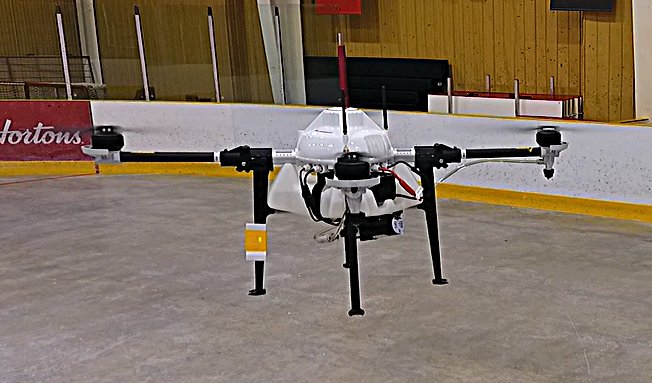
Clarion Drone Academy is now offering drone-enhanced disinfectant spraying services for large indoor and outdoor venues.
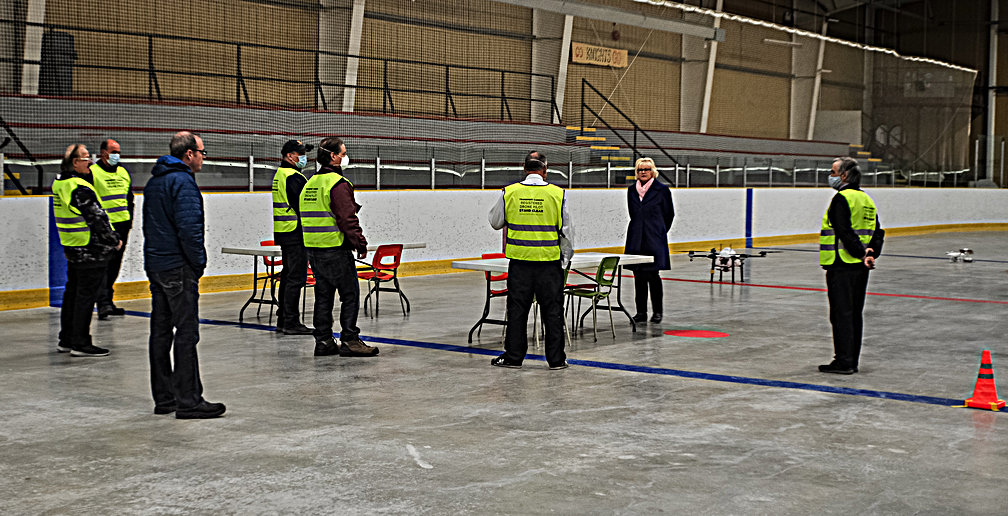
MP Cheryl Gallant addresses Clarion Drone team along with partners SmartCone Technologies and NanoBubble Control
The current and unprecedented global crisis caused by the COVID-19 virus is changing the way people view the importance of facility cleanliness and the new normal is going to require higher levels of vigilance on cleanliness and sanitation.
Large work and play areas such as:
- warehouses
- storage facilities
- stadiums
- race tracks
- playgrounds
- schools
- arenas
Disinfection is usually completed using crews of people to clean and disinfect areas by hand, but this method is time consuming and costly especially on larger venues.
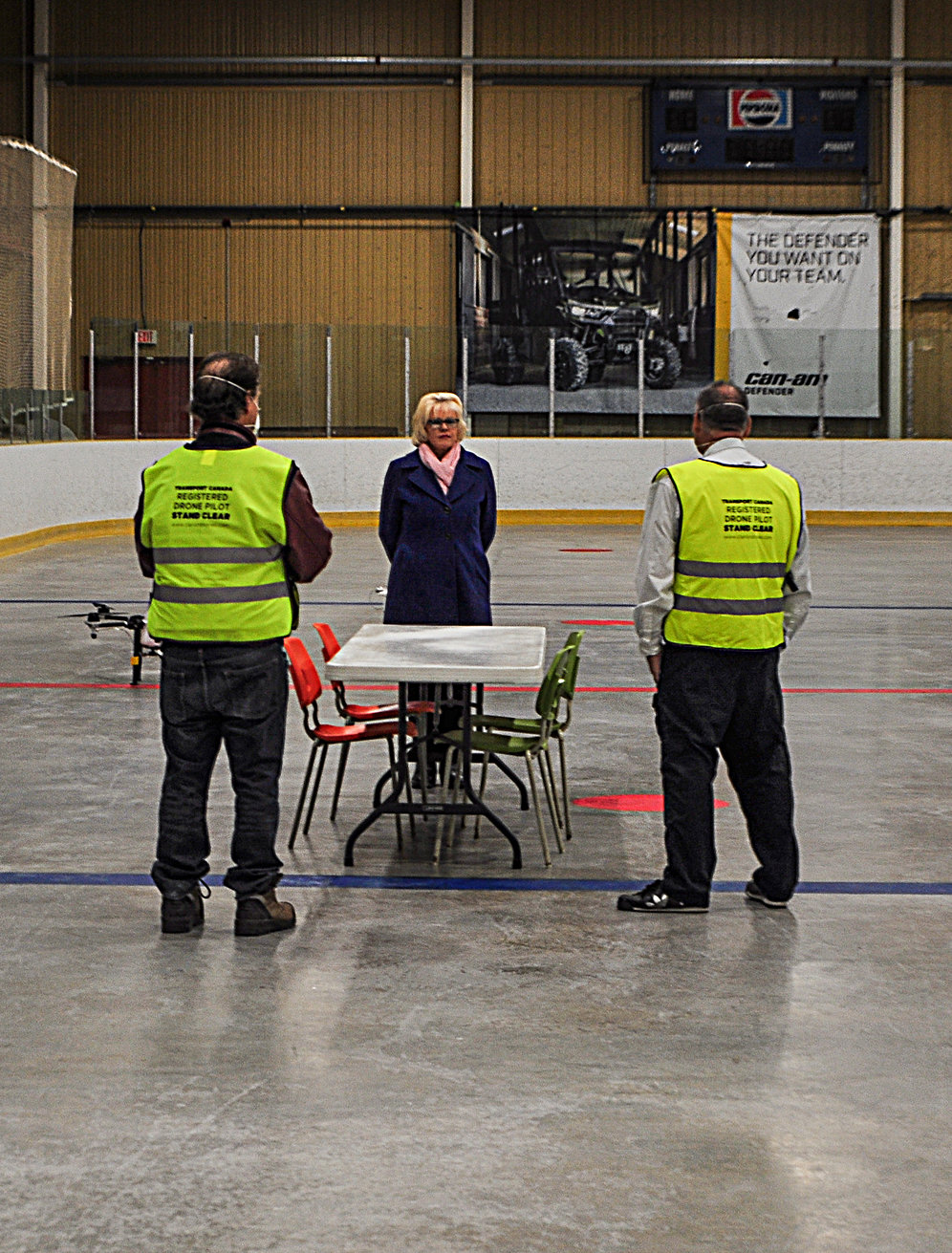
Clarion's approach is to get people back to work quicker and with less down time. Using the spraying drone technique and Clarion's expertise, large work spaces can be disinfected between shift changes with minimal downtime thus keeping costs down and getting people back to work,
Most recently a live demonstration of this technology was presented in Deep River on May 12 , 2020 with the help of our partner SmartCone Technologies and NanoBubble Control.
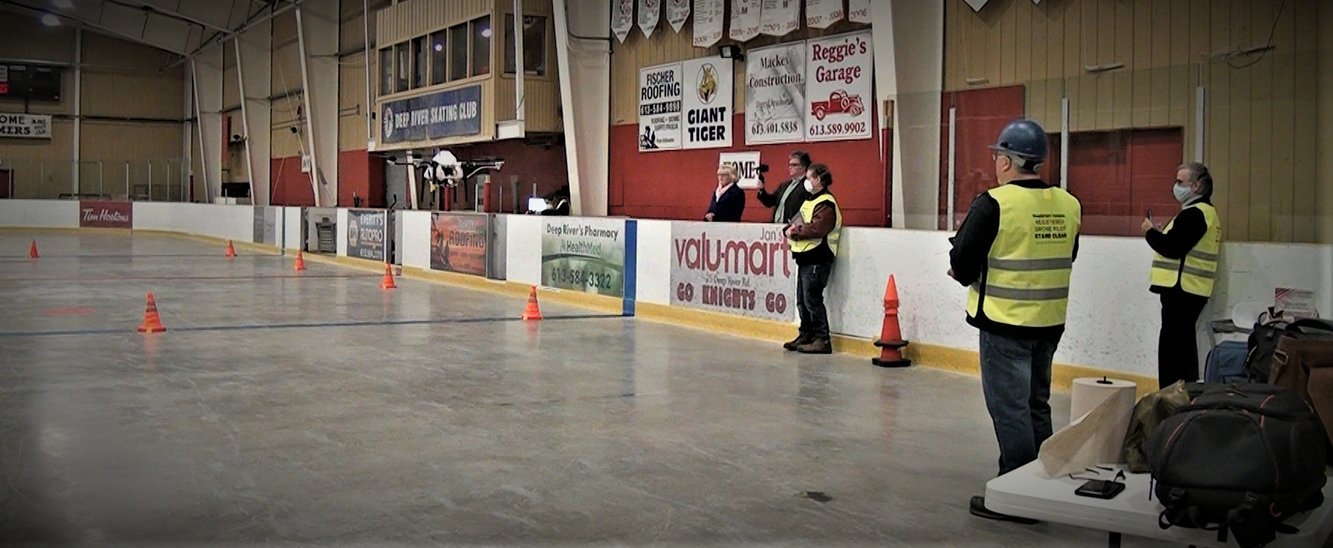
Many Thanks to the great people at Deep River Arena for all their help, what a great facility !